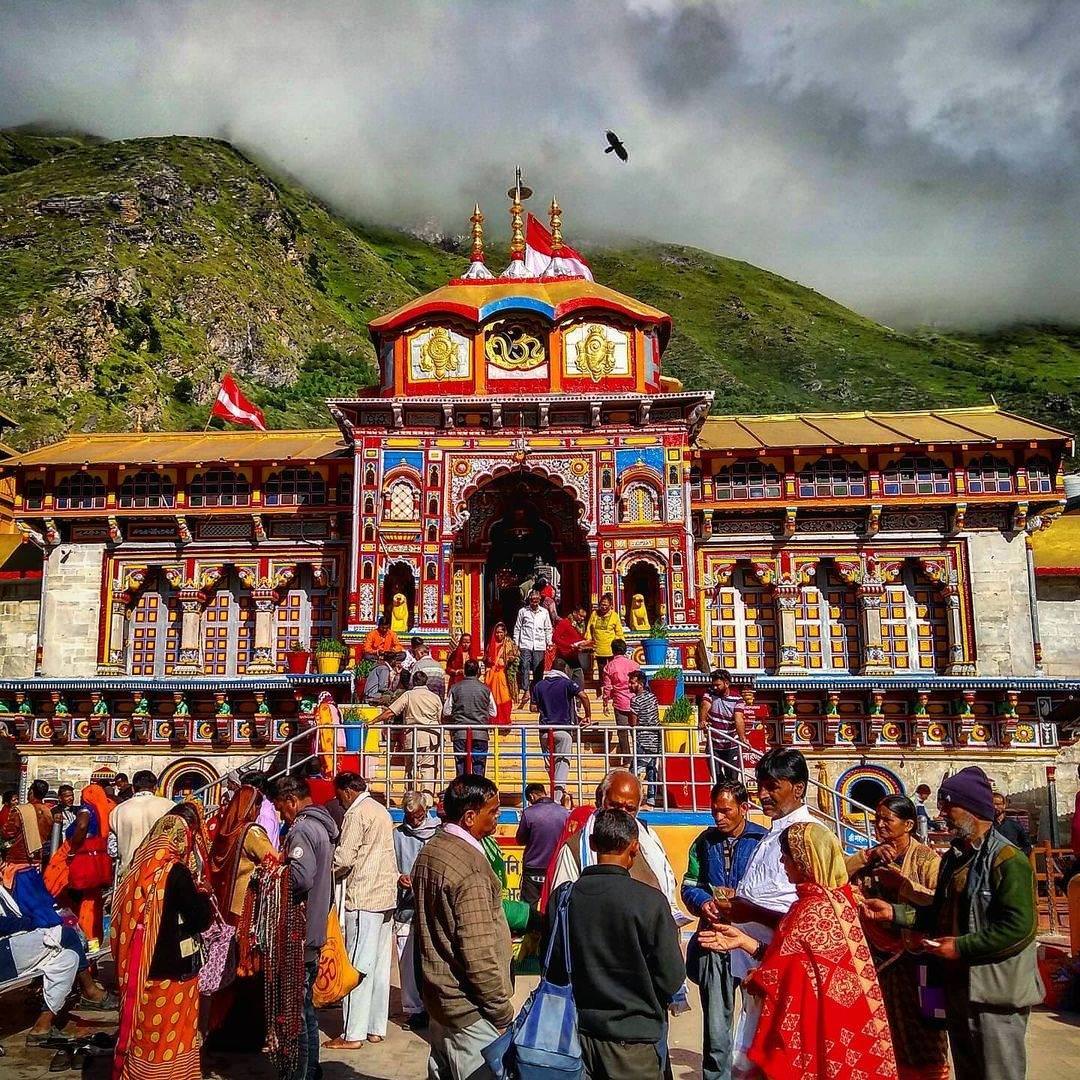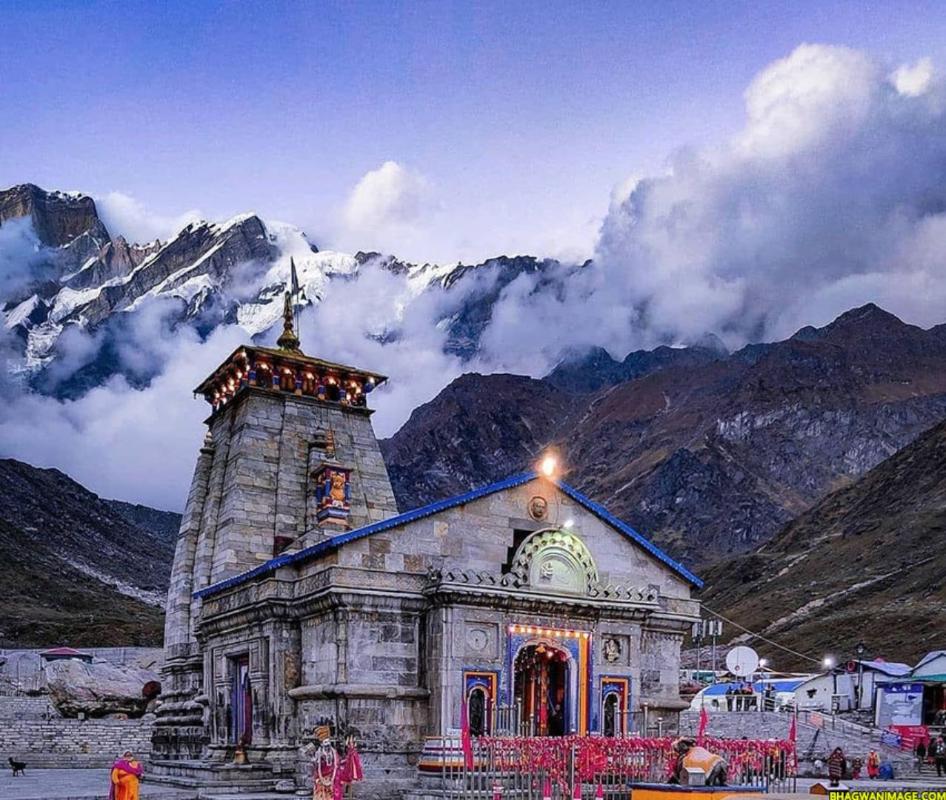Badrinath Dham

Badrinath Dham, situated in the Chamoli district
of Uttarakhand, India, is one of the most revered pilgrimage sites for Hindus.
Nestled between the Nar and Narayana mountain ranges and perched at an
elevation of approximately 3,300 meters (10,827 feet) above sea level, it forms
part of the Char Dham, the four holiest sites in Hinduism, which also include
Yamunotri, Gangotri, and Kedarnath.
Badrinath
Dham, located in the Indian state of Uttarakhand, is one of the four Char Dhams
(sacred pilgrimage sites) in Hinduism. Here's an overview of Badrinath Dham,
covering its history, religious significance, geography, and other relevant
details:
1. Historical Background
Legend
and Mythology:
- Lord Vishnu's Meditation: According to Hindu mythology, Badrinath is
where Lord Vishnu meditated. It is believed that Goddess Lakshmi, his
consort, took the form of a Badri tree to provide him shade and protection
from the harsh weather, hence the name Badrinath (Lord of Badri).
- Nar and Narayana: Another legend states that two sages, Nar and
Narayana (incarnations of Vishnu), performed penance here.
Establishment:
- The temple's exact origin is unclear, but it is believed to have
been established by Adi Shankaracharya, a revered 8th-century Hindu philosopher
and theologian, who discovered the Badrinath idol in the Alaknanda River
and enshrined it in the temple.
2. Religious Significance
Char
Dham and Chota Char Dham:
- Badrinath Dham is part of the larger Char Dham pilgrimage, which
also includes Dwarka, Puri, and Rameswaram. Within Uttarakhand, it is part
of the Chota Char Dham circuit, which includes Kedarnath, Gangotri, and
Yamunotri.
Maha
Vishnu Temple:
- The primary deity worshipped here is Lord Vishnu, particularly in
his aspect as Badrinarayan. The temple also holds idols of other deities,
including Lakshmi and Narad.
Scriptural
References:
- The temple and the surrounding region are mentioned in several Hindu
scriptures, including the Mahabharata, Bhagavad Gita, and Puranas,
emphasizing its sanctity.
3. Geography and Climate
Location:
- Badrinath Dham is situated in the Garhwal Himalayas, along the banks
of the Alaknanda River, at an elevation of 3,300 meters (10,827 feet)
above sea level.
Climate:
- The area experiences a cold climate, with snow-covered peaks
surrounding it. The temple is open to pilgrims from April to November due
to harsh winter conditions in the remaining months.
Accessibility:
- The nearest major town is Joshimath, from where a motorable road
leads to Badrinath. The closest railway station is at Haridwar, and the
nearest airport is Jolly Grant Airport in Dehradun.
4. Temple Architecture
Structure:
- The temple has a height of approximately 15 meters and features a
colorful facade with intricate carvings. The structure resembles a typical
North Indian style of architecture with a tall, conical spire.
Sanctum:
- Inside the temple, the sanctum sanctorum houses the black stone idol
of Badrinarayan, depicted in a meditative posture. The idol is about 1
meter tall.
Other
Features:
- The temple complex includes a Tapt Kund (hot spring), where pilgrims
traditionally bathe before entering the temple for darshan (viewing of the
deity).
5. Festivals and Rituals
Major
Festivals:
- Badri-Kedar Utsav: Celebrated in June, this festival honors the
presiding deities of Badrinath and Kedarnath temples.
- Mata Murti Ka Mela: Celebrated in September, it honors the mother of
Badrinath.
Daily
Rituals:
- The temple follows a strict daily ritual schedule, starting early in
the morning with the Abhishekam (ritual bathing) and culminating in the
evening aarti (prayer ceremony).
6. Pilgrimage and Tourism
Annual
Yatra:
- Thousands of pilgrims undertake the annual Char Dham Yatra, with
Badrinath being a significant stop. The pilgrimage season peaks during the
summer months.
Trekking
and Adventure:
- The region around Badrinath offers opportunities for trekking and
adventure sports, with trails leading to various scenic spots and
higher-altitude locations like the Valley of Flowers and Hemkund Sahib.
Historical and Mythological Significance
The Badrinath Dham dedicated to Lord Vishnu, has a rich historical and mythological background. It is believed to have been established by Adi Shankaracharya, an 8th-century philosopher and theologian who consolidated the doctrine of Advaita Vedanta. According to legend, Adi Shankaracharya discovered a black stone image of Lord Badrinarayan in the Alaknanda River and enshrined it in a cave near the Tapt Kund hot springs.
The mythology of Badrinath Dham intertwines with various ancient scriptures. It is said that the sage Narada once rebuked Vishnu for indulging in worldly pleasures. To perform penance, Vishnu came to Badrinath and meditated in the form of Nar-Narayan. Another legend tells of the twin brothers, Nar and Narayan, who performed severe austerities here. Additionally, the Pandavas are believed to have passed through Badrinath during their journey to Swarga (heaven) in the Mahabharata epic.
Architectural and Cultural Marvel
The architecture of the Badrinath Temple is noteworthy, showcasing traditional Garhwali wooden architecture. The facade is colorful, adorned with intricate carvings and paintings. The sanctum houses the one-meter-tall black stone idol of Lord Badrinarayan, depicted in a meditative posture.
The temple complex includes 15 idols, each sculpted from black stone. Besides Badrinarayan, there are idols of other deities like Narayana, Nar, Narayan, Lakshmi, and Garuda. The primary shrine is surrounded by several smaller shrines and kunds (water tanks), including the Tapt Kund, a hot spring believed to have medicinal properties.
Pilgrimage and Festivals
Badrinath Dham is open to pilgrims from April to November, the exact dates determined by the Hindu calendar and weather conditions. During winter, the idol of Badrinarayan is moved to the nearby village of Pandukeshwar for worship, as the temple is snowbound.
The pilgrimage season sees a flurry of activity, with thousands of devotees undertaking the arduous journey to seek blessings. The most significant festival celebrated here is the Mata Murti Ka Mela, dedicated to the mother of Badrinath. Other festivals include Badri-Kedar Utsav and the Janmashtami festival, which commemorates the birth of Lord Krishna.
Natural Splendor
The journey to Badrinath Dham is as spiritually uplifting as the destination itself, offering breathtaking views of the Himalayan ranges, lush green valleys, and gushing rivers. The Alaknanda River flows beside the temple, adding to the serene and picturesque environment. The region is also known for its diverse flora and fauna, with many rare Himalayan species found here.
How to reach Badrinath Dham
Reaching Badrinath Dham is a challenging yet rewarding experience. The nearest airport is Jolly Grant Airport in Dehradun, approximately 314 kilometers away. The closest railway station is Rishikesh, around 295 kilometers from Badrinath. From these points, the journey continues by road, with regular bus and taxi services available. The final stretch involves a steep and winding mountain road, which can be arduous but is well-maintained.
Modern-Day Relevance
In recent times, Badrinath Dham has seen increased accessibility and infrastructure development, ensuring a safer and more comfortable journey for pilgrims. The Indian government and various non-governmental organizations are continuously working on improving the facilities and preserving the sanctity of the site.
Badrinath Dham continues to be a beacon of spiritual solace, drawing millions of devotees from across the globe. It embodies the profound cultural and religious ethos of India, representing an unbroken tradition of pilgrimage that has persisted through centuries. The experience of visiting Badrinath is not just a religious journey but a celebration of the natural beauty and spiritual heritage of the Himalayas.

